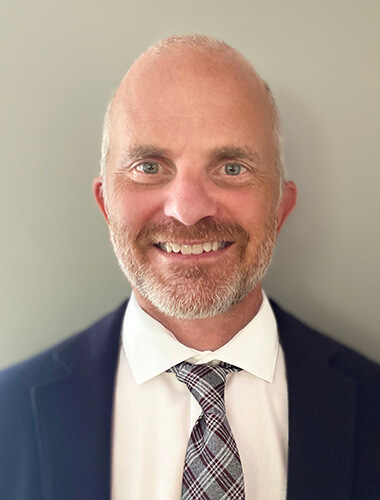Resiliency in Infrastructure Part 2: Challenges & Influencing Stakeholders
by Paul Schmitz, on March 17, 2021
 Everyone seems to agree that resilient infrastructure sounds good in theory – building longer-lasting, safer structures that will cost less to maintain over time makes perfect sense. However, putting these plans into practice is a different story. Financial constraints and conflicting agendas are just two of the reoccurring hurdles that often sideline our well-meaning intentions. How do we get everyone on the same page?
Everyone seems to agree that resilient infrastructure sounds good in theory – building longer-lasting, safer structures that will cost less to maintain over time makes perfect sense. However, putting these plans into practice is a different story. Financial constraints and conflicting agendas are just two of the reoccurring hurdles that often sideline our well-meaning intentions. How do we get everyone on the same page?
We gathered leading experts in the transportation industry to discuss their perspectives on resiliency in infrastructure. This week we asked them to describe the challenges they face, actions we can take, and what data is required to convince stakeholders to make the right decisions for a more resilient future.
What are the some of the biggest hurdles to overcome in developing more resilient infrastructure?
-
Kevan Stone (CEO & Executive Director - National Association of County Engineers)
Cost. Until components of resilient infrastructure come close to mimicking existing components (this is not uniform across the board, however), cost will always come into play. While everyone concedes there are savings long-term, budget constraints in real-time matter.
-
Jon Young (Executive Director - Hawaii Asphalt Paving Industry)
The biggest hurdle is getting government agencies to recognize the need for more resilient infrastructure. It also difficult to get agencies to work together for the greater good. Many agencies think about their needs and do not consider how they affect the needs of other agencies.
-
Bryan Mulqueen (EVP, Director of Transit & Rail - Gannett Fleming)
Among the biggest challenges are credible assessments of the conditions which infrastructure will face in the future, whether these be environmental changes, technology driven changes, or any of a broad range of other societal dynamics that will alter environment and use case. Further challenge exists in demonstrating the value and cost benefit of providing for these knowns and unknowns where it may drive up the initial capital investment.
-
Bethany Carl Kraft(Senior Program Manager – Volkert)
Incorporation of resiliency can be complex at times, requiring consideration of both traditional engineering approaches to achieve robustness, as well as the complex and interconnected natures of incorporating social behavior, environmental science and predicted future conditions into projects.
-
Dan Ginolfi & Howard Marlowe (Principals - Coastal Strategies)
One of the greatest challenges is the availability of funding and financing alternatives. There is a strong need for developing financing pools to provide upfront capital for resilient investments. Better understanding of engineering solutions available on the market are also important as local and state leadership are uncertain which solutions will work the best and where for increasing resilience.
While the concept of resilient infrastructure is generally endorsed, it often clashes with long-standing design methods, agency standards and stakeholder interests (budgets, profitability, etc.). What practical steps can be taken to influence stakeholders to rethink their approaches to accelerate the adoption of resilient means and methods?
-
Jason Bird (FL Resilience Practice Leader - Jacobs Engineering)
By shifting decision making and investment tools from being purely based on capital (initial cost) to also factor in cost of ownership (LCA - life cycle cost), the incremental cost to build back better or use higher standards more than pays for itself and generates savings.
-
Berry Still (Transportation SE Unit Business Leader - Mead & Hunt, Inc.)
Explore potential risks/threats with the client - review case study reports of cities with similar resiliency challenges. Additionally, conduct cost-benefit analyses (including "the cost of doing nothing") to show how upfront costs will pay dividends in the future. Show stakeholders photo/video of what similar communities are dealing with and educate regarding how these communities have overcome similar challenges (funding, agency standards, etc).
-
Shahriar Najafi (District Pavement Manager Engineer - Virginia DOT)
Identify the B/C (Benefit/Cost) ratio for alternative designs and demonstrate the benefits to the stakeholders. Engage the stakeholders in the decision-making process. If an agency or business becomes a leader in these practices, prospective employees that share the same belief will be attracted to the agency. This will drive a cultural change within said agency/business to lean towards these ideas.
-
Scott Sounart (Associate – Kimley Horn)
Foremost is education and communication. Then rewrite the specifications for success.
-
Tom Tietz (Executive Director – California Nevada Cement Association)
Consistently emphasize the present realities of future risks. This seems easy to do after a major event. For example, there will likely be a large number of bills in 2021 California legislative session focused on mitigating wildfire risk and climate change. Meanwhile, there is a 70% chance of a 6.9 earthquake in San Francisco in the next 30 years.
-
Robin Seidel (Resiliency Architect Project Manager - Weston & Sampson)
I think two steps should occur; first, I believe governmental agencies need to integrate resiliency into their specifications and start budgeting for resiliency improvements in everyday improvements. Second, somehow builders and contractors need to be taught the best means and methods of resiliency.
-
Patrick Marchman (Climate Resiliency Project Manager – Kleinfelder)
Innovative financing and accounting methods to show longer-term benefits rather than short-term cost/benefit. This should also include the integration of other non-engineer modes of thinking (planners, etc).
What type of data needs to be gathered to understand and provide more resilient infrastructure?
-
Berry Still (Transportation SE Unit Business Leader - Mead & Hunt, Inc.)
Resilient strategies involve understanding the function and need of an asset, as well as the risks and vulnerabilities. Data collection should include justification for the project, stakeholder input, and the project's potential effect on connected projects. Additionally, data is needed to evaluate potential threats (i.e., sea level rise, temperature, storm frequency) to a project's useful life.
-
John Wallace (Director – Intelligent Systems – Tensar)
When I think about resilient infrastructure, I think about two primary types of data: Historical (static) data and Real Time (some call this “streaming”) data. Historical data is useful for understanding what has happened in the past and, potentially providing some indication about what might happen in the future. This type of data tends to be relatively easy to obtain and is useful in decision making but doesn’t tell us what actions may need to be taken now to address an unforeseen issue. This is where the real time (or streaming) data can be used. Real time data is generally provided by some type of sensing system. By having this type of information readily available, problems can be addressed early before a serious issue occurs. Technology advances are making these types of sensing systems more readily available and easier to apply to monitoring infrastructure conditions.
-
Maria Lehman (Director U.S. Infrastructure – GHD, Inc.)
Costs to replace - ASCE 7 required trailer homes in hurricane prone areas to be tied down. Manufactured home suppliers fought because of 1-2% increase in costs. They lost and today, you do not see the destruction that was prevalent during Hurricane Andrew.
-
Brad Sheffield (Senior Geotechnical Engineer - CSI Geo, Inc.)
Risks and hazards in the world today present themselves as environmental risks and cyber security and physical security risks. Environmental risks are often localized and must be evaluated and considered at local, regional, and state levels and should be managed and controlled by regional districts or state management officials. The data collected should be based on local environmental and geologic risks and data to establish standards for changing conditions and resiliency.
Education seems to be the key theme when it comes to tackling infrastructure challenges and influencing stakeholders (and therefore change). Whether that is through collecting intelligent data, analyzing successes in other communities, or accurately calculating future financial gains – stakeholders can’t ignore hard facts. In Part 3 we take this theme a step further in a discussion of change in guidance and specifications for resilient infrastructure design.
Did you miss Part 1? Catch up on the meaning of resilient infrastructure.
Topics:
- Rigid Pavement Road
- Public Roads
- Ports
- Oil, Gas & Petrochemical
- Renewables
- Commercial & Industrial
- Working Surfaces
- Environmental Construction
- Haul Road
- Unpaved Road
- Parking Lot
- Subgrade Stabilization
- Asphalt Reinforcement
- Heavy Duty Roads & Surfaces
- Crane Pad Reinforcement
- InterAx
- TriAx
- BiAxial (BX)
- GlasGrid
- GlasPave
- Rapid Repair
- FilterGrid




